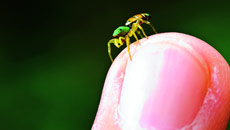Toy-related injuries in the US rose by nearly 40 percent from 1990 through 2011, says a new study.
The study highlights that while playing with toys helps children to develop, learn, and explore, parents should also note that many toys pose an injury risk to children.
In this first-of-its-kind study, the researchers found that an estimated 3,278,073 children were treated in United States emergency departments from 1990 through 2011 for a toy-related injury.
In 2011, a child was treated every three minutes for such an injury.
Slightly more than half of the injuries happened among children younger than five years of age.
"The frequency and increasing rate of injuries to children associated with toys, especially those associated with foot-powered scooters, is concerning," said Gary Smith, the study's senior author and professor of pediatrics at the Ohio State University in the US.
Children of different ages face different hazards from toys, Smith said.
Children younger than three years of age are at particular risk of choking on small toys and small parts of toys.
During the study period, there were more than 109,000 cases of children younger than five swallowing or inhaling "foreign bodies," the equivalent of almost 14 cases per day.
As children get older, injuries involving riding toys increase. Those toys - which include foot-powered scooters, wagons and tricycles - were associated with 42 percent of injuries to children within five to 17 years of age and 28 percent of injuries to children younger than five.
Injuries with ride-on toys were three times more likely to involve a broken bone or a dislocation than other toys.
The findings appeared online in the journal Clinical Pediatrics.






